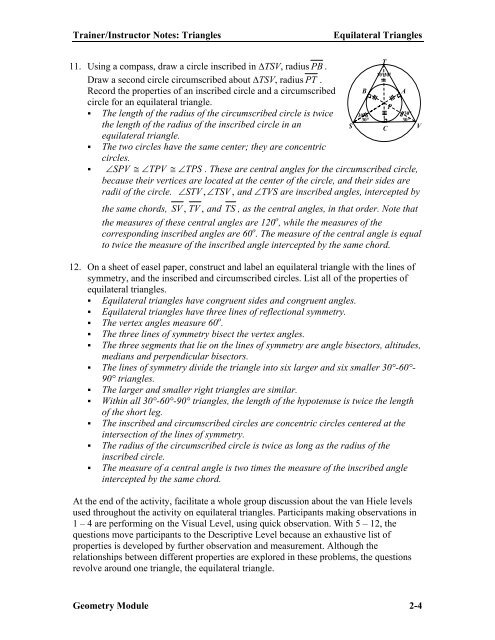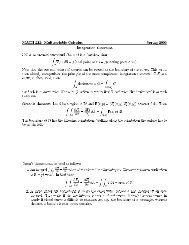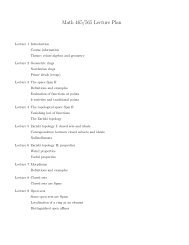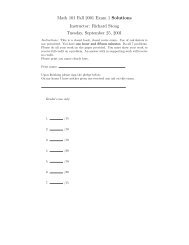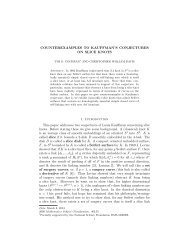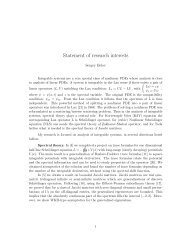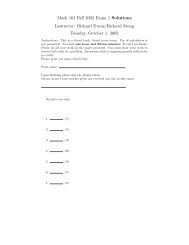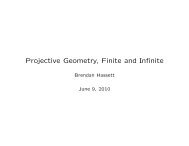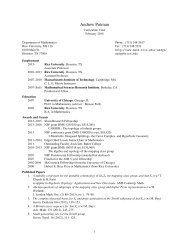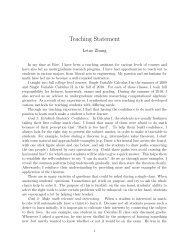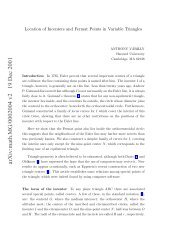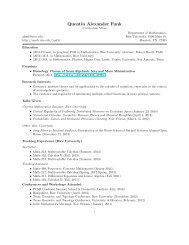Unit 2 - Triangles Equilateral Triangles
Unit 2 - Triangles Equilateral Triangles
Unit 2 - Triangles Equilateral Triangles
You also want an ePaper? Increase the reach of your titles
YUMPU automatically turns print PDFs into web optimized ePapers that Google loves.
Trainer/Instructor Notes: <strong>Triangles</strong> <strong>Equilateral</strong> <strong>Triangles</strong><br />
11. Using a compass, draw a circle inscribed in ∆TSV, radius PB .<br />
Draw a second circle circumscribed about ∆TSV, radius PT .<br />
Record the properties of an inscribed circle and a circumscribed<br />
circle for an equilateral triangle.<br />
The length of the radius of the circumscribed circle is twice<br />
the length of the radius of the inscribed circle in an<br />
equilateral triangle.<br />
The two circles have the same center; they are concentric<br />
30°<br />
30°<br />
30° 30°<br />
circles.<br />
∠SPV ≅ ∠TPV≅ ∠ TPS . These are central angles for the circumscribed circle,<br />
because their vertices are located at the center of the circle, and their sides are<br />
radii of the circle. ∠STV , ∠TSV , and ∠TVS are inscribed angles, intercepted by<br />
the same chords, SV , TV , and TS , as the central angles, in that order. Note that<br />
the measures of these central angles are 120 o , while the measures of the<br />
corresponding inscribed angles are 60 o . The measure of the central angle is equal<br />
to twice the measure of the inscribed angle intercepted by the same chord.<br />
12. On a sheet of easel paper, construct and label an equilateral triangle with the lines of<br />
symmetry, and the inscribed and circumscribed circles. List all of the properties of<br />
equilateral triangles.<br />
<strong>Equilateral</strong> triangles have congruent sides and congruent angles.<br />
<strong>Equilateral</strong> triangles have three lines of reflectional symmetry.<br />
The vertex angles measure 60 o .<br />
The three lines of symmetry bisect the vertex angles.<br />
The three segments that lie on the lines of symmetry are angle bisectors, altitudes,<br />
medians and perpendicular bisectors.<br />
The lines of symmetry divide the triangle into six larger and six smaller 30°-60°-<br />
90° triangles.<br />
The larger and smaller right triangles are similar.<br />
Within all 30°-60°-90° triangles, the length of the hypotenuse is twice the length<br />
of the short leg.<br />
The inscribed and circumscribed circles are concentric circles centered at the<br />
intersection of the lines of symmetry.<br />
The radius of the circumscribed circle is twice as long as the radius of the<br />
inscribed circle.<br />
The measure of a central angle is two times the measure of the inscribed angle<br />
intercepted by the same chord.<br />
At the end of the activity, facilitate a whole group discussion about the van Hiele levels<br />
used throughout the activity on equilateral triangles. Participants making observations in<br />
1 – 4 are performing on the Visual Level, using quick observation. With 5 – 12, the<br />
questions move participants to the Descriptive Level because an exhaustive list of<br />
properties is developed by further observation and measurement. Although the<br />
relationships between different properties are explored in these problems, the questions<br />
revolve around one triangle, the equilateral triangle.<br />
Geometry Module 2-4<br />
S<br />
T<br />
30° 30°<br />
B A<br />
C<br />
P<br />
V


